Astronaut Journal Entry - First Days On Space Station
Astronaut Journal Entry - First Days on Space Station
Currently, six humans are living and working on the International Space Station, which orbits 250 miles above our planet at 17,500mph. Below you will find a real journal entry, written in space, by NASA astronaut Scott Tingle.
To read more entires from this series, visit our Space Blogs on Tumblr.

At 22:00, after initial “safing” and unpacking of Soyuz, we finally retired to our quarters. It was very hard to sleep, and I think the busy days leading us to the International Space Station (ISS) were beginning to take their toll. We were scheduled for a full day of work to include familiarization of safety equipment as well as beginning to prepare several science experiments for action.

The SpaceX Dragon cargo craft arrived to ISS a couple days before we did, and its cargo included several experiments that needed to be conducted promptly upon arrival. I was doing a great job of floating from one module to another. Since I was a little behind schedule due to having to learn where everything is, I decided I could speed up my floating to be more expeditious. Well, we know how that usually goes and this time was no exception. I gathered a “bag of knots” (aviator slang for “going really fast”) and began a healthy transition from Node 2 into the Columbus module – where I predictably hit the top of my head. Ouch. The following three days (Tuesday-Saturday) were challenging as we worked to integrate all of our new knowledge and increase our efficiencies. The senior crew was very helpful and understanding. I was very grateful of how they managed our arrival and how they slowly passed down the information we needed to get started. Everything was different from life on Earth. Everything. We quickly figured out that we needed to think differently as we began to adapt to life in space. Drinking water, preparing food, eating food, using the toilet, working, physical training, etc., all different. I had a good handle on the differences and what to expect before I got there. But I didn’t expect that when operations got very busy that my reflexes would respond naturally as they did on Earth. The light bulb came on. I was going to have to move slower and think about everything before I took action. This is why space fliers new to this environment appear to be less efficient than most managers and/or operations planners would like. Adaptation to life in space takes time, and you can’t rush it.
On day three, I finally had the opportunity to look out the Cupola (window facing Earth). My Lord, what a beautiful sight. I could see the sun rising in front of us, darkness below and behind us, and a bright blue ring highlighting the curvature of the Earth as the sun began to rise. Absolutely amazing!

We wrapped up our busy week and celebrated Saturday night by enjoying some rehydrated meats and instant juices! Christmas Eve, we had a few tasks that kept us busy, and the same on Christmas Day. Fortunately, we were able to have video conferences with our families over the holiday, and it was really nice to talk with them. We also had a very short celebration for Christmas after work was done. Our wonderful Behavioral Health Professionals at NASA had sent us Christmas stockings in the SpaceX cargo delivery. I added the small gifts that I brought for the crew – superhero socks! Mark got Hulk socks, Nemo (Norishige Kanai) got Spiderman socks, Joe got Deadpool socks, Anton got Superman socks, and Sasha and I got Batman socks. NOW, we are ready to conquer space!
Find more ‘Captain’s Log’ entries HERE.
Follow NASA astronaut Scott Tingle on Instagram and Twitter.
Make sure to follow us on Tumblr for your regular dose of space: http://nasa.tumblr.com.
More Posts from Maxx85 and Others
How to Care Less about What Other People Think
1. Know what matters to you, personally – what you stand for, and what your values are .
2. Don’t be anxious about breaking social norms. The more often you do this, the less it bothers you.
3. Decide not to live as a people pleaser, or to get upset and take rejection personally.
4. Hang out with people who are self confident, who know what they believe in, and what they want from life. You’ll find that their self-confidence will rub off on you, too.
5. Try to work on becoming more competent in the skills and areas that matter to you. That will naturally enhance your self confidence, and develop a self image that is strong and positive.
6. Travel, and spend time with different kinds of people. That will show you how diverse attitudes and outlooks are. There’s no one way of being – so find, and be, yourself.

To celebrate coming back to uni and getting 100 followers (one. hundred. :O ), it’s #optomstudies here with my first ever study tips post! Here’s a step-by-step guide on sleeping and waking up early! Follow me for weekly study tips!
I decided to make this my first topic because this year I’m unfortunately going to have 8am lectures, meaning I’ll need to wake up at 5:30am to get there from my house! And on top of that night time clinic will last until 9:30pm we’re told, meaning I’m going to be getting home at like 11:30pm :( So I’m resetting my body clock to prepare for it :)

The sunrise from this morning’s run :) #nofilter
THE NIGHT BEFORE
Turn off your devices an hour before sleep. The blue light from your computer and mobile can really disrupt the natural melatonin levels that control your sleep cycle, so I always try to end the day with some sort of reading, whether that be for leisure or some summary notes at the end of the day.
Don’t drink any tea or coffee before you sleep. Better to finish the night off with some warm milk and honey (thank you kuroshitsuji) or something similarly soothing.
Write down a list of what you want to achieve by waking up early. Seeing or even remembering the list can stop you from crawling back to the warmth of your bed, especially in the middle of winter. When the morning you isn’t able to think clearly, let the motivated you make the decisions! And I wouldn’t recommend making a list of what you achieved today to feel accomplished because how’s that going to help you when you’re going to be asleep and unconscious anyway?
Pick out the clothes you want to wear for tomorrow, and make sure they match the weather! Like with the tasks you want to achieve, it’s not a good idea to let the morning you fumble with clothes and what matches well. Definitely do include a jacket or hoodie that you can slip off once the day gets warmer!
Keep your bed reserved for sleeping. Put your smartphone on the other side of the room so that you aren’t tempted to go and check up on your messages on social media. This will reduce the chance that you start a conversation with some night owl friend that ends up continuing past midnight.
Make sure your room is pitch black. This is so that light doesn’t end up disrupting your sleep cycle and so that you condition your body into thinking that it’s time for sleep.
Clear your mind. Whether you achieve this by meditating or otherwise, don’t think about anything, lest you stay up tossing and turning. This includes both exciting events tomorrow and sad events from today.
Get either 7.5 or 9 hours of sleep. This is because the brain has sleep cycles that are approximately 90 minutes long, so sleeping past will immediately pull you into the next sleep phase. When you wake up in the middle of deep sleep, you end up feeling groggy and tired throughout the whole next morning.
THE NEXT DAY
Reset your sleep cycle by waking at the same time each day. We all have those nights where we absolutely need to finish something by tomorrow (because the professors all conspired with each other and decided to give us double the homework for each subject due the next day :P) but try to keep it constant when you wake. So if you miss the point where you would’ve slept 7.5 hours, go for 6, since you still have a complete sleeping period, and usually that extra hour or so is enough to get the work finished. So don’t think about sleeping in for afternoon classes, because you’ll just feel worse for wear the next time you have morning classes.
Go cold turkey. Willpower is like a muscle, the more you exercise it the stronger it gets, and I can see no greater struggle than waking up early, jks. I have tried the gradual method of waking up at 7:30, 7:15, 7:00, etc. but I found the best way is to just so straight to your target wake up time. The first day you feel tired in the middle of the day, but it’s easier than adjusting to a new sleep cycle each morning for a week (or longer if you miss a day).
Wake up with a full blast of natural light. If your bed is next to a window like mine, then pull up the blinds to let as much natural light in as possible to stop the production of melatonin.
Set an alarm that you know will wake you up. Whether it be a song you like or a super annoying alarm bell, choose something that you can associate with waking up in the morning. For me, I always use BoA’s song Who Are You, because the music video reminds me of a new day, and it has a lovely and soft piano intro :)
Wake up the first time your alarm rings. Although you want to sleep a little longer in order to feel more refreshed, hitting the snooze button is actually detrimental as this explanation from Maimonides Medical Centre explains:
According to Dr. Yizhak Kupfer, Assistant Director of Critical Care and Pulmonary Medicine, using an alarm clock often wakes a person up in the middle of their sleep cycle and cuts rapid eye movement (REM) sleep short. “Over the course of a night, a person goes through five shifting stages of sleep,“ explains Dr. Kupfer. “The brain constantly goes through these stages, emitting different brain waves that reflect if a person is experiencing lighter or deeper periods of sleep.” People who are reliant on their snooze button can diminish the positive effect of a good night’s rest because they are constantly drifting back to sleep only to be abruptly woken up a few minutes later. This causes a shortened, disrupted sleep cycle right before a person starts their day.
Jump out of bed immediately. Don’t lie in bed thinking; you’ll just drift off again.
Have a glass of cold water, but don’t just down a whole bottle in one go, because your kidneys are remarkably good at preventing our electrolyte balance from being thrown out of homeostasis, so downing a heap of water will just make them overwork to reduce the water levels. Just see this ELI5 from reddit, though probably with a pinch of salt, considering all the differing opinions. Best to keep that glass of water next to you as you work and drink a few sips at a time while you are working.
If you drink an excess of water, you have diluted the careful balance of electrolytes. Your kidneys will rapidly dump that water to ensure these electrolyte concentrations are not diluted.
Put on your clothes quickly! This one comes from personal experience. In the past just to avoid that chilly feel from clothes when winter comes along, I would get out of bed and get my clothes and stuff them under my blanket and take a quick snooze while they got warm. But that usually just ended with me getting my clothes wrinkled rather than actually doing much in terms of warming them up >_< Plus, now I find that doing it quickly is like a burst of energy to get you going for exercise.
Finish what you were going to do. Remember that list we wrote last night? Do it now and feel great about doing at least one thing extra this morning.
Don’t have a cup of coffee (yet)! On waking, our bodies stop the production of melatonin and start the production of cortisol to get you going. Cortisol isn’t just for stress, it also starts gluconeogenesis to increase your blood glucose levels (which is important for your brain function) and increases your metabolism. Drinking coffee will disrupt this natural waking hormone, and it also reduces blood flow to the frontal cortex which is responsible for higher order thinking and cognition, explained in this article:
Caffeine increases energy metabolism throughout the brain but decreases at the same time cerebral blood flow, inducing a relative brain hypoperfusion.
What this means is that although there is more sugar available, oxygen supply decreases. If you do drink coffee, it’s recommended to drink it around 9:00 or so, after the natural cortisol kicks in. I say it’s better to stick to exercise, which is proven to benefit your health in almost every way.
Exercise. There’s no need for me to explain that this is the best way to feel energized and refreshed for the rest of the day and to get your heart pumping! The morning air is dewy and hasn’t yet been tampered by the smell of car fumes and other pollution, so breath in :) Play some music with beats that will get you moving (this morning’s run brought to you by f(x)’s Rude Love). I snapped a picture as I left the house just before the sun started to rise :)

Enjoy the benefits of a job well done. Give yourself a pat on the back, because it’s tiring to get up at 6am or earlier! You’ve got your study space all to yourself, enjoy it with a cup of orange juice, and some peace and quiet. Get to work/uni/school nice and early, ready to learn something new and feel proud that you aren’t one of those groggy students with their heads glued to the table!
Hope you’ve enjoyed reading my first study tips post, I intend to publish more and better posts in the future too! Follow me, as I’ll be doing the 100 days of productivity challenge starting March! (this coming week!)
MY WEEKLY STUDY TIPS
WHAT I WISH I’D KNOWN BEFORE UNIVERSITY STUDY TIPS SERIES
0 Choosing a Degree , 1 Administration , 2 Getting to Class
3 Studying , 4 Extra-Curriculars , 5 Exams , 6 Social Life
7 Part Time Work , 8 Four Secrets Uni Tells You
new!! 9 Best Study Spots on Campus new!!
new!! 10 Saving Money 1 (Food, Transport, Entertainment) new!!
coming soon!! 10 Saving Money 2 (Textbooks, Tax, Scholarships)
SEE ALSO
Study Spaces Masterpost , Studying and your Visual System
Catching Up with Your Studies , Dealing with Bad Results
Sleeping and Waking Up Early , Google Keep
My 2017 Planner and Bullet Journal , Study Space , 2017 goals
+ my cute stationery + washi collection + my spreads!

Spacex promotional items
Falcon 9 patch
Pull tag before launch key ring
Mars text code
If Earth had Saturn’s Rings
From an excellent post by Jason Davis
From Washington, D.C., the rings would only fill a portion of the sky, but appear striking nonetheless. Here, we see them at sunrise.

From Guatemala, only 14 degrees above the equator, the rings would begin to stretch across the horizon. Their reflected light would make the moon much brighter.

From Earth’s equator, Saturn’s rings would be viewed edge-on, appearing as a thin, bright line bisecting the sky.

At the March and September equinoxes, the Sun would be positioned directly over the rings, casting a dramatic shadow at the equator.

At midnight at the Tropic of Capricorn, which sits at 23 degrees south latitude, the Earth casts a shadow over the middle of the rings, while the outer portions remain lit.

via x
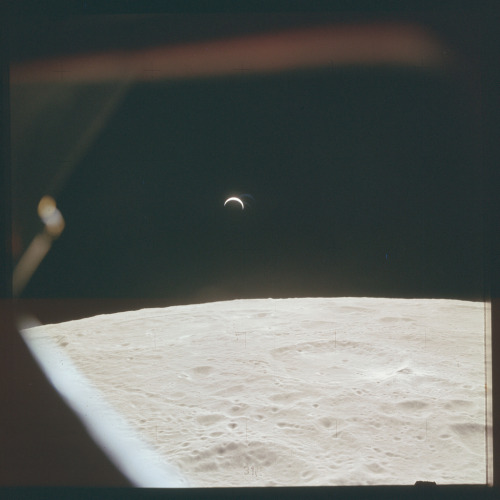

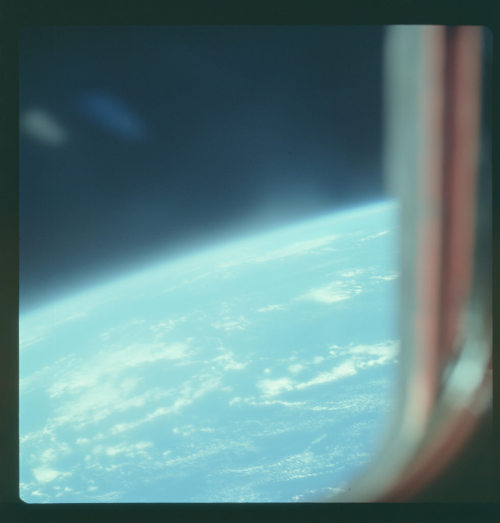
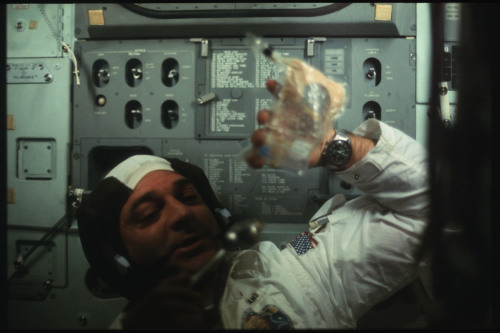
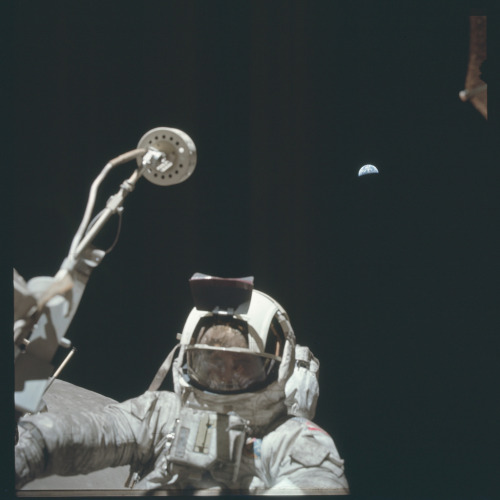
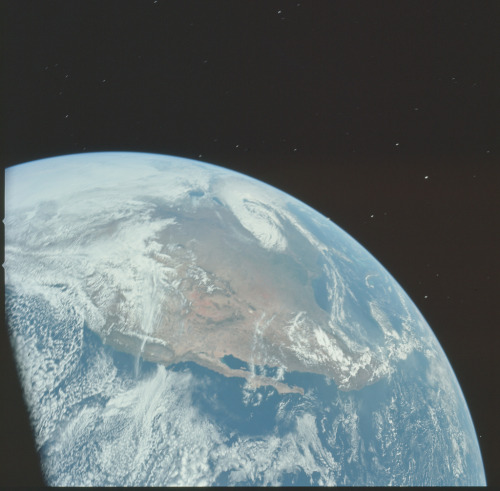
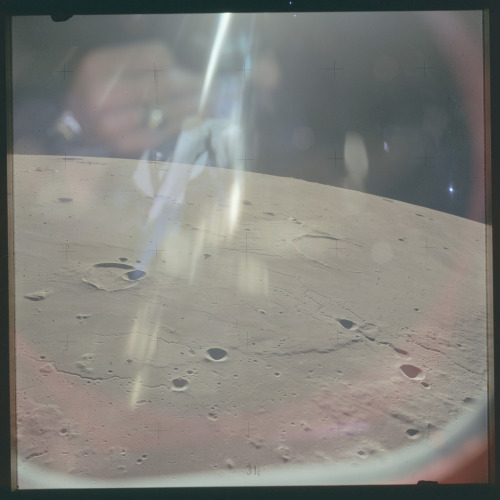
Every Photo From NASA’s Apollo Missions Are Now on Flickr
The Project Apollo Archive uploaded more than 8,400 high-resolution images the astronauts took during NASA’s Apollo Missions of the 1960s and 70s. The collection includes every photo shot with the Hasselblad cameras on the lunar surface, from Earth and lunar orbit, as well as during the journey between the two. All the photos are unprocessed versions of the original scans.
Astronaut Journal Entry - The Last Week
Currently, six humans are living and working on the International Space Station, which orbits 250 miles above our planet at 17,500mph. Below you will find a real journal entry, written in space, by NASA astronaut Scott Tingle.
To read more entires from this series, visit our Space Blogs on Tumblr.

I can’t believe that Expedition 55 is already over. Today is Sunday, and we will depart the International Space Station (ISS) next Sunday morning (June 3).
168 days in space.
There have been many challenging moments, but even more positive highlights of our time on ISS. The new crew from the Soyuz MS-08 spacecraft (Oleg Artymyev, Drew Feustel and Ricky Arnold) joined Norishige Kanai (Nemo), Anton Shkaplerov and I last March. Since then, we have completed two spacewalks, captured and released the SpaceX Dragon-14 cargo craft, captured the Cygnus OA-9 cargo craft and completed a myriad of maintenance and science activities.

The team on the ground controlling, monitoring, supporting and planning has been amazing. It is always great to work with them, and especially during the moments where the equipment, tools, procedures or crew need help. It is incredible to see how much a good team can accomplish when methodically placing one foot in front of the other.
I have been lucky in that the first crew (Mark Vande Hei, Joe Acaba and Alexander Misurkin (Sasha)) and the second crew (Drew, Ricky and Oleg) were all amazing to work with. I do believe the planets aligned for my mission onboard ISS.

Drew and Ricky have been friends forever, and listening to them nip at each other provided a ton of great humor for the ground and for us. Their one-liners to each other reminded me of several scenes from the movie Space Cowboys.
This a great example that happened as I was writing this log entry:
Ricky: Hey Maker, is this your smoothie?
Maker: No.
Ricky: It must be Drew’s.
Drew: Hey Ricky, don’t drink my smoothie.
Ricky: What smoothie? This one has my name on it (as he writes his name on it).
Drew: Okay, Grandpa Underpants, hands off my smoothie.
Ricky: Okay, Feustelnaut – we have rules around here, so this is my smoothie now!
All: Much laughing. (To quote my kids: “LOL!”)
One the hardest things to do in space is to maintain positive control of individual items such as tools, spare parts, fasteners, etc. We try very hard not to lose things, but even with all of the attention and positive control, items can still float away and disappear.
We generally hold items in a crew transfer bag (CTB). Inside the CTB are many items for the system that it supports. When the CTB is opened, the items are free floating inside the bag and tend to escape. It is very difficult to maintain control of the items – especially if they are small, do not have Velcro, or when the daily schedule is so tight that we are rushing to stay on time. We always try to close the CTB’s and Ziploc bags after removing or replacing each item to maintain positive control, but this takes much more time to do for individual items, and if the timeline is tight, we absorb more risk by rushing.

The same applies for tools, which we usually keep in a Ziploc bag while working on individual systems and tasks. Last month, I was installing a new low temperature cooling loop pump that had failed a month or two earlier. I gathered the needed tools into my modified (with Velcro) Ziploc bag as I always do and floated over to the work area. When I got there, one of the tools that I had gathered was missing. I looked for 30 minutes, and could not find it. Lost items are very hard to find because the items that escape are usually barely moving and blend in with the environment very quickly. A lost item could be right in front of us and we would never see it.

Our crew, after learning these lessons, decided that when anyone loses something, we would tell the other crew members what we had lost with a general location. This has had a huge impact on finding items. If a different crew member can help within the first minutes of losing an item, the new crew member has an excellent chance of finding the item. We have proven this technique several times during the expedition – and Nemo was the very best at quickly finding lost items. But, in my case, we still could not find the missing tool. Our amazing ground team understood and vectored me to a replacement tool and I finished the job. I spent the next 3 weeks watching, looking and never forgetting about the lost tool. Then, one day last week, Oleg came to the lab and handed us a tool he had found in his Soyuz spacecraft, way on the aft side of the ISS. Amazing. We finally found the tool and I was happy again. This was a lucky ending. ISS has many corners, crevices and hard-to-see areas where missing items could hide and never be found.

We captured a Cygnus cargo craft last Thursday. I was very impressed with the entire team. Our specialists and training professionals in Mission Control did a great job preparing the necessary procedures and making sure we were proficient and ready to conduct operations. The robotic arm is a wonderful system that we could not operate ISS without. Being in space, however, it has some very unique handling qualities. If you think about a spring-mass-damper system just as you did during physics or control theory class, and then remove the damper, you will see a system that is very subject to slow rate oscillations.
In test pilot terms, damping ratio is very low and the latency is well over a half of a second. Also in test pilot terms – this is a pilot-induced oscillations (PIO) generator. These characteristics require crew to “fly” the robotic arm using open-loop techniques, which requires a huge amount of patience. Test pilots are sometimes not very patient, but understanding the system and practicing with the incredible simulators that our ground team built and maintain help keep our proficiency as high as possible. The capture went flawlessly, and I was very impressed with the professionalism across the board – crew, flight controllers and training professionals – what a great job!

Drew, Ricky and I got to play guitar a few times while on ISS. This was fun! Drew connected pickups to the acoustic guitars and then connected the pickups to our tablets for amplification. I’ve never heard an acoustic guitar sound like an electric guitar amped up for heavy metal before. We had a great jam on the song “Gloria”, and a couple others. Rock on!
Last night we had our last movie night. The entire crew gathered in Node 2 and watched Avengers Infinity Wars on the big screen. We enjoy each other’s company, as we did during Expedition 54, and this was a welcome break from the daily grind of trying to complete the required stowage, maintenance and science activities while preparing for departure.
Our last full weekend here on ISS. I gave myself a haircut. We usually clean our spaces each weekend to make sure we can maintain a decent level of organization, efficiency and morale. This weekend is no different, and it is time for me to vacuum out all of our filters and vents. You’d be amazed at what we find!
The top 5 things I will miss when I am no longer in space:
The incredible team that supports ISS operations from our control centers
The camaraderie onboard ISS
The breathtaking view of the Earth, Moon, Sun and Stars
Floating/flying from location to location with very little effort
Operations in the extreme environment of space
Find more ‘Captain’s Log’ entries HERE.
Follow NASA astronaut Scott Tingle on Instagram and Twitter.
Make sure to follow us on Tumblr for your regular dose of space: http://nasa.tumblr.com.
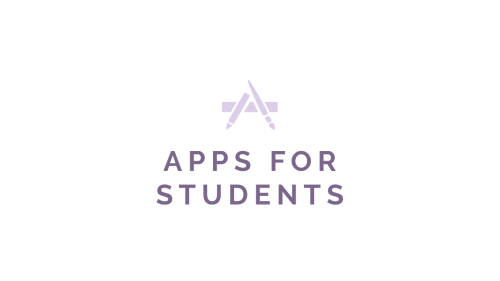
Notetaking
Sound Note - take notes while you record audio
Evernote - notetaking that syncs across platforms
Paper 53 - minimal notetaking that syncs
Microsoft OneNote - collaboration and syncing, best for Office users
Google Keep - jot things down, best for Google suite users
Notability - take notes and annotate PDFs
Mindly - create mind maps
Day One - a digital journal
Flash Cards
Quizlet - the quintessential flash card app
StudyBlue - another commonly used app
Cram - best for its “cram mode”
Eidetic - uses spaced repetition for effective memorization
Planner
My Study Life - schedules, tasks, reminders, and more
StudyCal - keeps track of tasks, exams, and grades
24me - automated reminders and event planning
iStudiez - schedule and prioritized task list
Google Calendar - a calendar, best for Google users
Glass Planner - a calendar and to do list with incredible functionality
To Do List
Clear - organized to-do and reminders
MinimaList - simple to-do and focus timer
Trello - collaborative project organizer
Todoist - clean and functional task manager
Default notes app on your phone
Time Management
Forest - plant trees by staying focused
Pomotodo - pomodoro timer with to-do list
Timeglass - custom timers
Tide - pomodoro with white noise
Alarmy - forces you out of bed
Pillow - smart alarm that tracks sleep cycles
Productivity
Workflow - automate tasks
Habitica - turn your habits into an RPG
Continuo - simple, colorful activity tracking
Freedom - block distracting apps
Free Learning
Coursera - free MOOCs
TED - listen to Ted Talks
Duolingo - language learning
Memrise - spaced repetition language vocabulary
Khan Academy - free video lessons
Ambient Noise
8tracks - curated playlists
Spotify - online music streaming
Coffitivity - cafe ambience
Noisli - background sound generator
Rain Rain - rain sounds
Binaural - binaural beats
Health
Rockin Ramen - recipes based on ramen
MealBoard - meal planning
Lifesum - healthy eating
Stop Breath And Think - mindfulness meditation
Pacifica - mental health management
Sworkit - personalized video workouts
Waterlogged - hydration tracker
Reference
WolframAlpha - Google on steroids
Oxford Dictionary - all of English at your fingertips
RefMe - citation generator
PhotoMath - solve math problems by taking a photo
Mathway - step by step math help
Desmos - free graphing calculator
Wikipedia - not the best source, but it’s handy
Miscellaneous
Companion - stay safe when walking alone
Mint - money management
Toshl - finance manager
Tiny Scanner - scan documents


2018 June 16
Dusty With a Chance of Dust Image Credit: NASA, JPL-Caltech, MSSS, Curiosity Mars Rover
Explanation: It’s storm season on Mars. Dusty with a chance of dust is the weather report for Gale crater as a recent planet-scale dust storm rages. On June 10 looking toward the east-northeast crater rim, the Curiosity rover’s Mastcam captured this image of its local conditions so far. Meanwhile over 2,000 kilometers away, the Opportunity rover ceased science operations as the storm grew thicker at its location on the west rim of Endeavour crater, and has stopped communicating, waiting out the storm for now. Curiosity is powered by a radioisotope thermoelectric generator, but the smaller Opportunity rover uses solar panels to charge its batteries. For Opportunity, the increasingly severe lack of sunlight has caused its batteries to run low.
∞ Source: apod.nasa.gov/apod/ap180616.html
Exploring an Asteroid Without Leaving Earth
This 45 day mission – which began May 5, 2018 and ends today, June 18 – will help our researchers learn how isolation and close quarters affect individual and group behavior. This study at our Johnson Space Center prepares us for long duration space missions, like a trip to an asteroid or even to Mars.

The Human Research Exploration Analog (HERA) that the crew members will be living in is one compact, science-making house. But unlike in a normal house, these inhabitants won’t go outside for 45 days. Their communication with the rest of planet Earth will also be very limited, and they won’t have any access to internet. So no checking social media, kids!
The only people they will talk with regularly are mission control and each other.

The HERA XVII crew is made up of 2 men and 2 women, selected from the Johnson Space Center Test Subject Screening (TSS) pool. The crew member selection process is based on a number of criteria, including criteria similar to what is used for astronaut selection. The four would-be astronauts are:
William Daniels
Chiemi Heil
Eleanor Morgan
Michael Pecaut

What will they be doing?
The crew are going on a simulated journey to an asteroid, a 715-day journey that we compress into 45 days. They will fly their simulated exploration vehicle around the asteroid once they arrive, conducting several site surveys before 2 of the crew members will participate in a series of virtual reality spacewalks.

They will also be participating in a suite of research investigations and will also engage in a wide range of operational and science activities, such as growing and analyzing plants and brine shrimp, maintaining and “operating” an important life support system, exercising on a stationary bicycle or using free weights, and sharpening their skills with a robotic arm simulation.

During the whole mission, they will consume food produced by the Johnson Space Center Food Lab – the same food that the astronauts enjoy on the International Space Station – which means that it needs to be rehydrated or warmed in a warming oven.
This simulation means that even when communicating with mission control, there will be a delay on all communications ranging from 1 to 5 minutes each way.
A few other details:
The crew follows a timeline that is similar to one used for the space station crew.
They work 16 hours a day, Monday through Friday. This includes time for daily planning, conferences, meals and exercise.
Mission: May 5 - June 18, 2018

But beware! While we do all we can to avoid crises during missions, crews need to be able to respond in the event of an emergency. The HERA crew will conduct a couple of emergency scenario simulations, including one that will require them to respond to a decrease in cabin pressure, potentially finding and repairing a leak in their spacecraft.
Throughout the mission, researchers will gather information about living in confinement, teamwork, team cohesion, mood, performance and overall well-being. The crew members will be tracked by numerous devices that each capture different types of data.
Learn more about the HERA mission HERE.
Explore the HERA habitat via 360-degree videos HERE.
Make sure to follow us on Tumblr for your regular dose of space: http://nasa.tumblr.com
-
 a-creative-cactus liked this · 7 months ago
a-creative-cactus liked this · 7 months ago -
 gaiawatcher liked this · 1 year ago
gaiawatcher liked this · 1 year ago -
 miaqc1 liked this · 1 year ago
miaqc1 liked this · 1 year ago -
 wingedstudentkingdom liked this · 1 year ago
wingedstudentkingdom liked this · 1 year ago -
 jousei-no-shumi liked this · 2 years ago
jousei-no-shumi liked this · 2 years ago -
 poppydistress liked this · 2 years ago
poppydistress liked this · 2 years ago -
 influenczarscrew liked this · 3 years ago
influenczarscrew liked this · 3 years ago -
 galactical-historian liked this · 3 years ago
galactical-historian liked this · 3 years ago -
 115camilicious liked this · 3 years ago
115camilicious liked this · 3 years ago -
 cloversposts liked this · 3 years ago
cloversposts liked this · 3 years ago -
 steve51world liked this · 3 years ago
steve51world liked this · 3 years ago -
 eros-military-bujutsu reblogged this · 3 years ago
eros-military-bujutsu reblogged this · 3 years ago -
 eros-military-bujutsu liked this · 3 years ago
eros-military-bujutsu liked this · 3 years ago -
 usafphantom2 reblogged this · 3 years ago
usafphantom2 reblogged this · 3 years ago -
 usafphantom2 liked this · 3 years ago
usafphantom2 liked this · 3 years ago -
 shan2o liked this · 3 years ago
shan2o liked this · 3 years ago -
 minhye93 liked this · 3 years ago
minhye93 liked this · 3 years ago -
 18thcenturyduchess liked this · 3 years ago
18thcenturyduchess liked this · 3 years ago -
 verywitch liked this · 3 years ago
verywitch liked this · 3 years ago -
 davebuckleslefthand liked this · 3 years ago
davebuckleslefthand liked this · 3 years ago -
 xlostinyourlight liked this · 3 years ago
xlostinyourlight liked this · 3 years ago -
 clarityyyy-vision reblogged this · 3 years ago
clarityyyy-vision reblogged this · 3 years ago -
 chimerical-charisma liked this · 3 years ago
chimerical-charisma liked this · 3 years ago -
 sonia-the-hedgehog-2369 liked this · 4 years ago
sonia-the-hedgehog-2369 liked this · 4 years ago -
 chaotic-ugly liked this · 4 years ago
chaotic-ugly liked this · 4 years ago -
 honhehlemons liked this · 4 years ago
honhehlemons liked this · 4 years ago -
 nance-drew liked this · 4 years ago
nance-drew liked this · 4 years ago -
 yeougugna liked this · 5 years ago
yeougugna liked this · 5 years ago